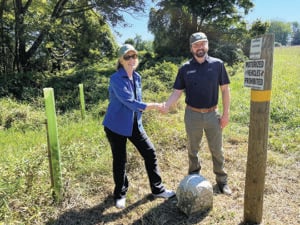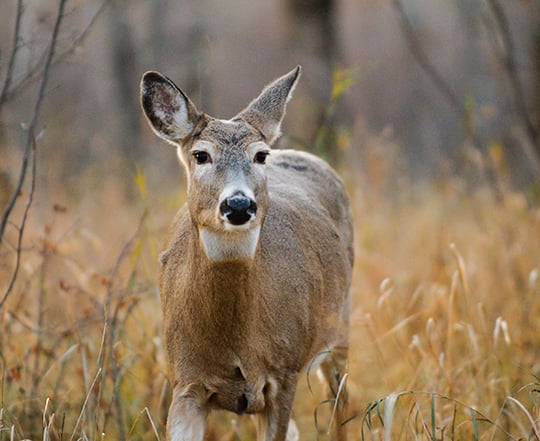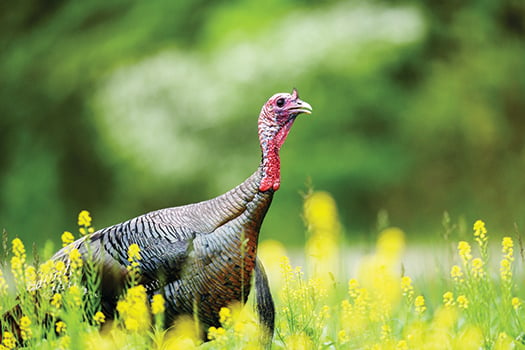Leaders for Pennsylvania, Maryland natural resources talk water quality – Outdoor News
Stricklersville, Pa. — Pennsylvania Department of Conservation and Natural Resources Secretary Cindy Adams Dunn and Maryland Department of Natural Resources Secretary Josh Kurtz toured water quality projects and explored opportunities for new and improved trail connections at a meeting in Pennsylvania and Maryland Sept. 10.
The joint event also served as a way for the two state leaders to strengthen their partnership and recommit to shared goals to improve water quality in local streams, rivers and the Chesapeake Bay.
“Water doesn’t stop flowing at state boundaries, so our work to improve the health of the Chesapeake Bay must be done through a strong partnership with other states in the region,” said Kurtz.
“Pennsylvania is making significant progress toward improving the health of its local streams and rivers. I’m proud to stand today with Secretary Dunn to strengthen our plans to work together, share information, and speed up progress toward reducing pollution that’s entering local streams and ultimately the Chesapeake Bay.”

Kurtz and Dunn first met with staff at Fair Hill Natural Resources Management Area in Cecil County, Maryland, where they viewed a stream-restoration project completed in concert with stormwater improvements to improve downstream water quality.
The Maryland Department of Natural Resources installed the approximately $90,000 project on an unnamed tributary stream of Big Elk Creek in 2018. Crews restored about 800 linear feet of the stream by reconnecting it with wetlands and partnering with more than 70 volunteers to plant 270 trees along the stream bank.
“As we highlight conservation work by Maryland and Pennsylvania to improve water quality in this critical watershed today, I cannot overstate the tremendous impact these projects have on the region,” Dunn said.
“More than 18 million people live in the Chesapeake Bay watershed, many of whom get their drinking water from local rivers and streams, such as Big Elk Creek, that flow into the bay.”
MORE COVERAGE FROM PENNSYLVANIA OUTDOOR NEWS:
Pennsylvania group celebrates 50 years of annual canoe trips
Man leaves shocking gift that funds co-op trout nursery in Pennsylvania
Pennsylvania House panel to discuss deer season opening day, bill on Sunday hunting
After viewing the stream-restoration project, the group toured the upstream stormwater retention area that reduces polluted runoff from a nearby parking lot.
Maryland partnered with the Center for Watershed Protection to relocate the parking area away from a flood plain, add permeable pavement to the lot, as well as install bioretention areas and step pool storm conveyance systems.
The work reduced streambank erosion and the amount of polluted runoff entering Big Elk Creek.
The secretaries then traveled across the Mason-Dixon Line into Pennsylvania and visited Big Elk Creek State Park. The 1,800-acre park consists of previous farmlands and forest lands. It acts as a wildlife corridor and provides refuge for an array of threatened and endangered species.

The group walked several trails near the Pennsylvania and Maryland state line to examine current or potential trail connections, or sites for trail improvement between Big Elk Creek and Fair Hill.
The secretaries also viewed a new tree planting at the park, which was completed earlier this year through a DCNR partnership with the Alliance for the Chesapeake Bay. This historic project planted 74,000 trees to help create a new riparian buffer along Big Elk Creek and its tributaries in the park.
Projects such as stormwater retention gardens, stream restorations, tree plantings, and vegetated stream buffers are best management practices that help reduce the amount of nitrogen and phosphorus-laden runoff that reaches waterways.
The plants that make up these best practices soak up the pollutants and use them to grow. In the water, nitrogen and phosphorus fuel algal blooms that cloud the water and remove dissolved oxygen when the blooms die off.
At more than 8,000 acres, the block of land that includes Fair Hill Natural Resources Management Area in Maryland and Big Elk Creek State Park and White Clay Creek Preserve in Pennsylvania is one of the largest contiguous areas of preserved open space in the mid-Atlantic.
“Working together, we can make sure this special area is maintained for generations to come,” said Kurtz. “We’re in the early stages of evaluating what’s possible and today’s tour was an important part of learning more about what we can do in the future to improve this conserved land.”
“I am proud to work with Secretary Kurtz and the Maryland Department of Natural Resources on new ways to work together to protect and conserve natural resources along the Mason-Dixon Line,” said Dunn.
“The bay is an American treasure that defies boundaries. I am grateful for the commitment to ensuring its health through this budding partnership.”
Source: https://www.outdoornews.com/2024/09/23/pa-md-natural-resources-big-wigs-talk-water-quality/







